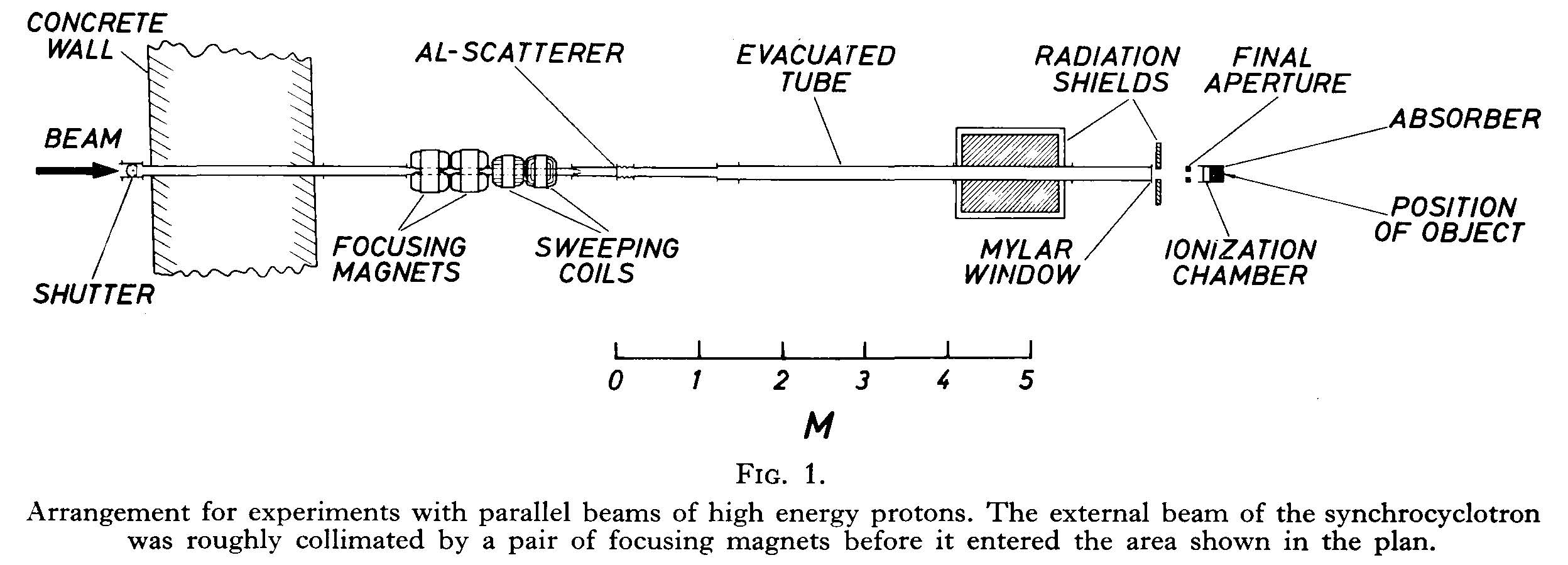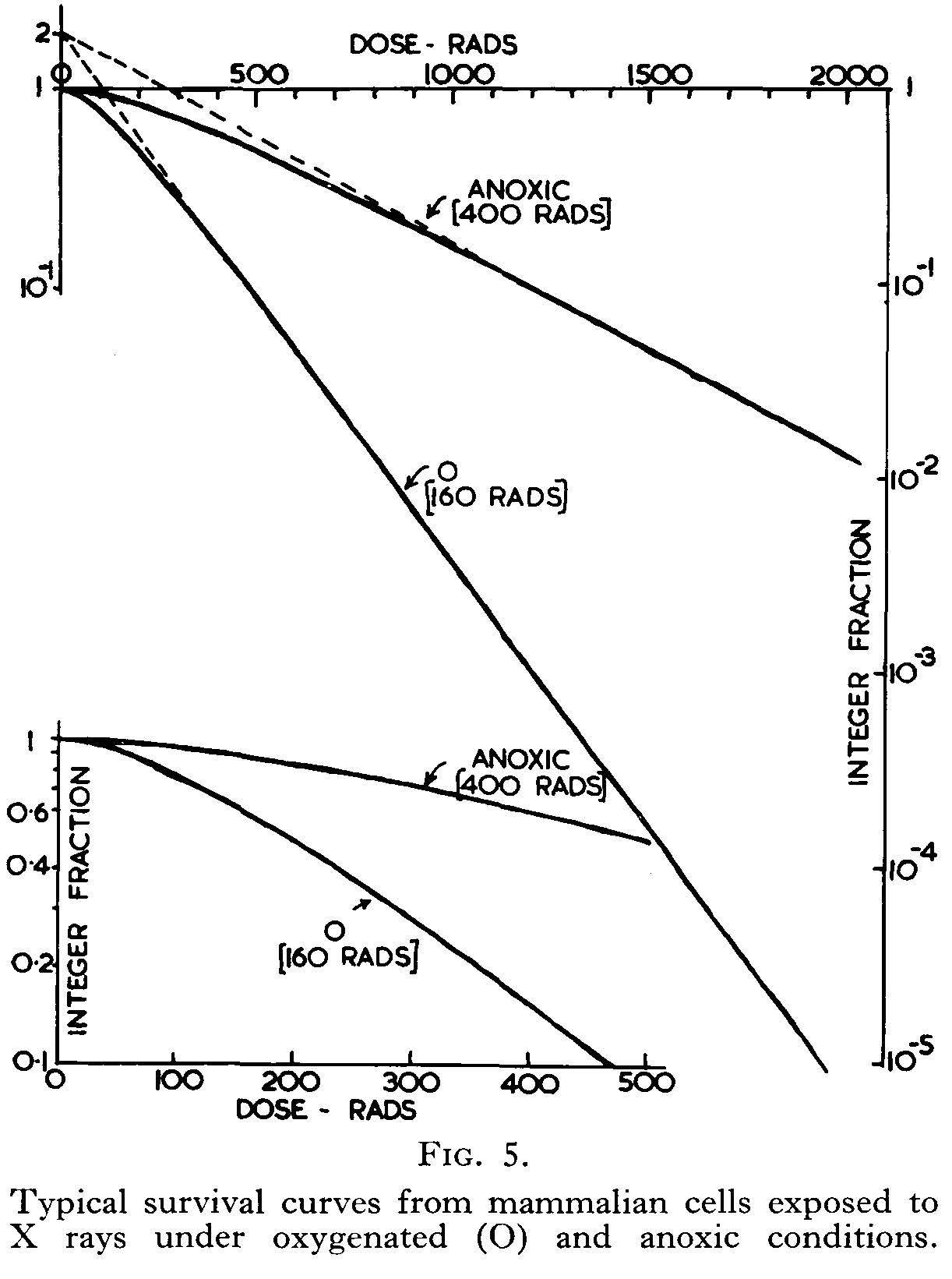Development of radiotherapy
The 1960s were a time of change. Probably the most interesting paper on therapy published in the 1960s was the Presidential Address of 1962 by Frank Ellis (Ellis BJR 1963; 36 (429): 627-644) on the topic of “My Philosophy of Radiotherapy.” It is difficult to overemphasize the contributions that Frank Ellis made to the development of radiotherapy and his address is a masterpiece.
The 1960s were a time of change and for his Presidential Address of 1959 (published in February 1960) CW Wilson reviewed his experience of therapy (Wilson BJR 1960; 33 (386): 69-81). Wilson had started at the Westminster Hospital in 1930 that had started telecurietherapy with the radium bomb in 1929 with the work of Ernest Rock Carling, Stanford Cade and Frank Allchin. Wilson then reviewed thirty years of telecurietherapy and discussed aspects of dosimetry, protection and radiobiology. The application of science to radiotherapy was the theme of JS Mitchell in his Silvanus Thompson memorial Lecture of 1968 (Mitchell BJR 1968; 41 (490): 729-748). There are full discussions of the current role of radiosensitive and radioactive drugs.
There was a discussion of the design of therapy departments in May 1963 by Glyn Evans from Cardiff with a description of the new centre (Evans BJR 1963; 36 (425): 327-339). Computers were slowly appearing in departments and RE Bentley from the Royal Cancer Hospital described their use in radiation treatment planning in this early paper on the topic (Bentley BJR 1964; 37 (442): 748-755). At the end of the decade DG Jameson (from the Middlesex Hospital) and Ann Trevelyan (from Elliott Medical Automation Research Unit) were using a computer to help with dose calculations for supplementary bream therapy (Jameson and Trevelyan BJR 1969; 42 (493): 57-60).
Megavoltage therapy was introduced into medical practice and in May 1960 Ralston Paterson reviewed the use of 20 MV and 4 MV radiation (Paterson BJR 1960; 33 (389): 271-272 and Paterson BJR 1960; 33(389): 284-286) comparing the relative biological efficiency of the newer megavoltage radiations with the older kilovoltage radiation. The new discoveries in atomic physics introduced new possibilities into therapy. In March 1961 Börje Larsson from Sweden reported on pre-therapeutic possibilities with high-energy protons (Larsson BJR 1961; 34(): 143-151).

Image source: Larsson BJR 1961; 34(): 143-151
Neutron therapy
In February 1963 a series of 8 papers from the Medical Research Councils Cyclotron Unit were published. All the papers are interesting and included an account of the uses of neutrons in therapy with advantages and disadvantages discussed by JF Fowler, RL Morgan and CAP Wood (Fowler, Morgan and Wood BJR 1963; 36(422): 77-80) and DK Bewley (Bewley BJR 1963; 36(422): 81-88) discussing the physical aspects with photographs of the cyclotron and method of irradiation. The discovery of and use of the neutron in therapy was discussed in the Presidential Address of Harold Miller in 1968 (Miller BJR 1969; 42(491): 81-90).
In April 1969 DK Bewley with CJ Parnell from the MRC Cyclotron Unit at Hammersmith Hospital described the neutron beam (Bewley and Parnell BJR 1969; 42(496): 281-288); in the following paper DK Bewley with Nicholas J McNally described the use of mammalian tissue culture cells as a biological dosimeter to obtain depth dose curves (McNally and Bewley BJR 1969; 42(496): 289-294). The fast neutron beam had by then been used in clinical trials of radiotherapy since August 1966.

Image source: McNally and Bewley BJR 1969; 42(496): 289-294
The linear accelerator
Three papers on recent developments in the linear accelerator appeared in March 1962 and are worth a look. CW Miller from Associated Electrical Industries reviewed the continuing developments (Miller BJR 1962; 35(411): 182-187), R Beadle and MG Kelliher from Vickers Research Ltd. at X-band developments (Beadle and Kelliher BJR 1962; 35(411): 188-196) and GK McGinty from Mullard Research Laboratories looked at changes in design (McGinty BJR 1962; 35(411): 196-199). The linear accelerator was a relatively recent addition to the range of radiotherapy equipment and Constance Wood and LH Gray had appreciated the possibility of clinical applications of accelerated electrons.

Image source: McGinty BJR 1962; 35(411): 196-199
The role of oxygen
The position of oxygen in radiotherapy was discussed by I Churchill-Davidson from St Thomas’s Hospital in May 1966 (Churchill-Davidson, Foster, Wiernik et al BJR 1966; 39(461): 321-331). In the mid-1960s many radiotherapy departments had already installed high-pressure oxygen treatment facilities or were installing them. The article illustrated their specially designed unit, described their technique and gave an account of their results. High-pressure oxygen therapy had been based on the radiobiological research work of LH Gray (Gray Conger, Ebert, Nat, Hornsey, Scott, BJR 1953; 26(312): 638-648). In April 1969 Thelma Bates from St. Thomas’s Hospital looked at the treatment of stage 3 carcinoma of the cervix using external beam radiotherapy and high-pressure oxygen (Bates BJR 1969; 42(496): 266-269). Lymphangiography had been used to image the lymph nodes of the pelvis.

Image source: Bates BJR 1969; 42(496): 266-269
The Cathetron
The Cathetron is a remotely controlled “after-loading” unit using a high activity cobalt source and reduced the treatment time to a few minutes. The unit was designed to produce the same dose distribution as the Manchester radium technique. Charles Joslin and co-workers from Charing Cross Hospital described the treatment of uterine cancer using the Cathetron in December 1967 (O’Connell, Joslin, Howard et al BJR 1967; 40(480): 882-887), (Liversage, Martin-Smith and Ramsey BJR 1967; 40(480): 887-894) & (Joslin, O’Connell and Howard BJR 1967; 40(480): 895-904). The treatment required careful assessment and their early results were presented.
Chemotherapy
The number of agents for chemotherapy increased adding to the armamentarium of the oncologist. PE Thompson Hancock from the Royal Free Hospital recounted his experience with Myleran (Busulphan) in the treatment of reticuloses in September 1961 (Thompson Hancock BJR 1961; 34(405): 573-577).
Fractionation
How radiation should be given was being actively researched. LG Lajtha, R Oliver and F Ellis from Oxford looked at the rationalisation of fractionation in radiotherapy in October 1960 (Lajtha, Oliver and Ellis BJR 1960; 33(394):634-635) based on the multi-hit nature of X-ray dose response curves. Frank Ellis returned to the topic in March 1963 in a symposium on the topic (Ellis BJR 1963; 36(423): 153-162). There was considerable interest in the pages of the BJR. JF Fowler from Hammersmith looked at the estimation of total dose for different numbers of fractions in radiotherapy in May 1965 (Fowler BJR 1965; 38(449): 365-368). The study of the fractionation of radiotherapy treatments must have been difficult with an almost infinite range of dosage protocols possible.

Image source: Ellis BJR 1963; 36(423): 153-162